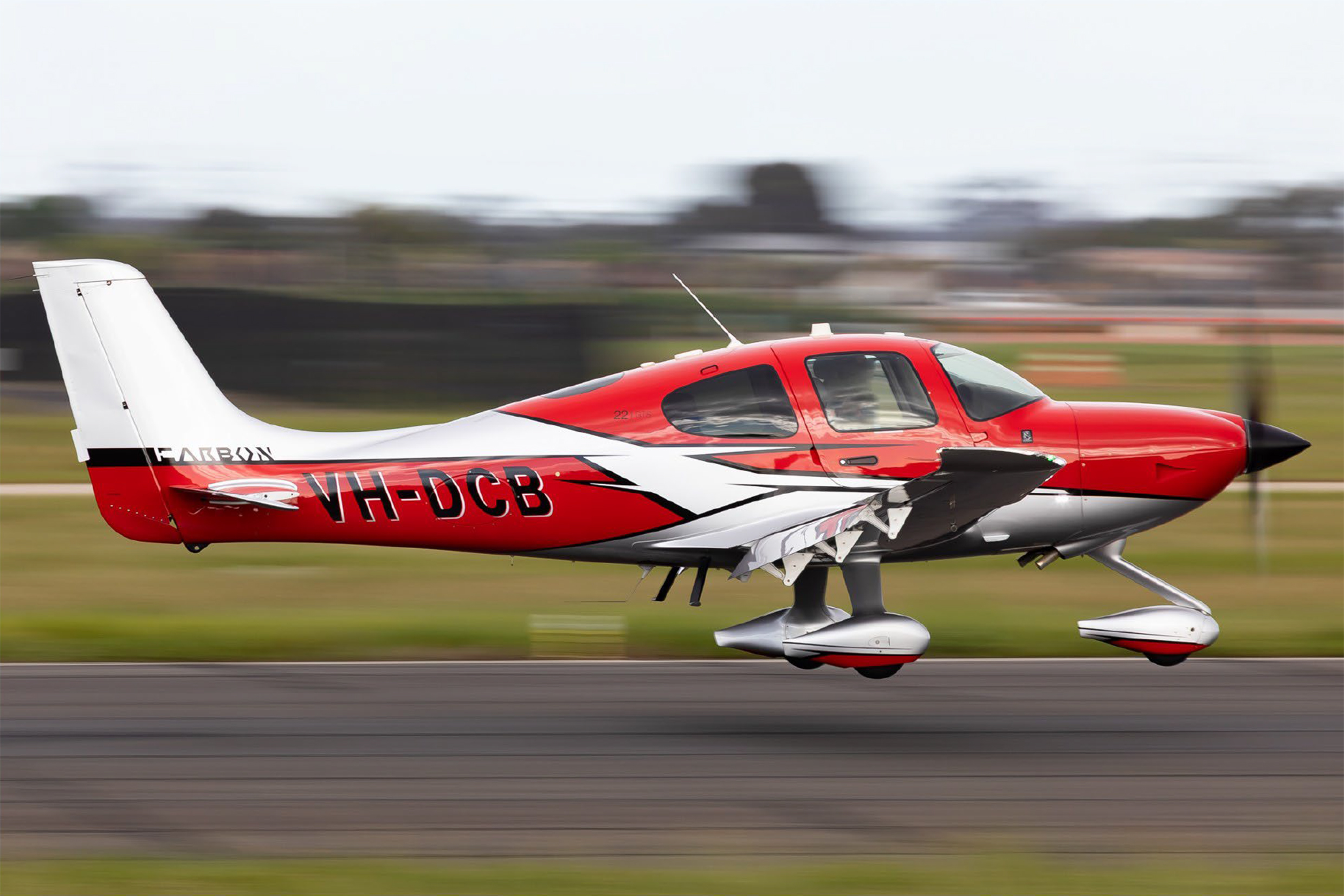There were flames from the engine and smoke in the cockpit, but the pilot stayed focused and methodical, successfully putting the Cirrus down on a highway in western NSW.
The report from the Australian Transport Safety Bureau (ATSB) into the incident shows how serious the situation was and how professionally it was handled by the pilot.
The report says the pilot elected not to deploy the aircraft’s ballistic recovery parachute due to concerns the fire could damage the parachute, and that a parachute-assisted landing (equivalent to a drop from 13 feet) may result in injuries to the passenger, who was pregnant.
Instead, the pilot began an emergency descent, putting the aircraft into a dive in an attempt to put out the fire, at the same time enacting the engine fire in-flight checklist from memory. The fire self-extinguished, but smoke began to enter the cockpit.
Despite the reduced visibility, the pilot managed to track to the highway to make a successful forced landing with no injuries.
Challenge and response
The pilot and passenger had been flying from the Gold Coast to Mildura in January this year.
The pilot held a commercial pilot licence with an instrument rating and had almost 3,500 flight hours, including about 1,900 hours on the Cirrus SR22.
About 3 hours into the flight, while approximately 150 kilometres north-west of Dubbo and cruising at about 8,000 feet, the aircraft’s engine oil pressure decreased below normal operating limits.
In response, the pilot began to divert for a landing at Nyngan. But as they were making a PAN PAN radio call announcing their intentions, they heard the engine begin to ‘rev up’, followed by a ‘bang’.
The pilot then made a MAYDAY broadcast to ATC, advising that the engine had experienced a mechanical failure and they would be making an emergency landing on the Mitchell Highway, east of Nyngan.
As ATC acknowledged the broadcast, the pilot saw flames coming from the top of the cowl. The pilot avoided 2 vehicles on the highway and, as a finishing touch, was able to exit the road into a parking area. Roadside posts caused minor damage to the left wingtip.
Aviate, navigate, communicate
‘The pilot’s timely and effective decision-making, likely supported by their experience on the aircraft type and knowledge of its performance capabilities, mitigated the risk of injury and further damage to the aircraft,’ ATSB Director Transport Safety Dr Stuart Godley said.
He said in-flight engine failures in single-engine aircraft often result in the pilot experiencing high workload and time pressure, making preparedness critical.
‘This incident demonstrates how the “aviate, navigate, communicate” framework establishes a clear hierarchy of priorities, particularly during emergencies,’ he said.
‘Acting in the appropriate order of priority improves situational awareness and supports coordinated responses in a dynamic environment.’
After the landing, the pilot inspected the engine and found the crankcase had ruptured. A connecting rod had separated from the crankshaft and the air filter was visibly damaged by fire.
A disassembly and inspection of the engine had yet to be conducted at the time of publication of the ATSB’s investigation report. As a result, the ATSB was unable to determine the root cause for the loss of oil pressure or the mechanical failure of the engine.
Read the final report: Engine failure involving Cirrus SR22, VH-DCB, 28 km east of Nyngan, New South Wales, on 24 January 2025





